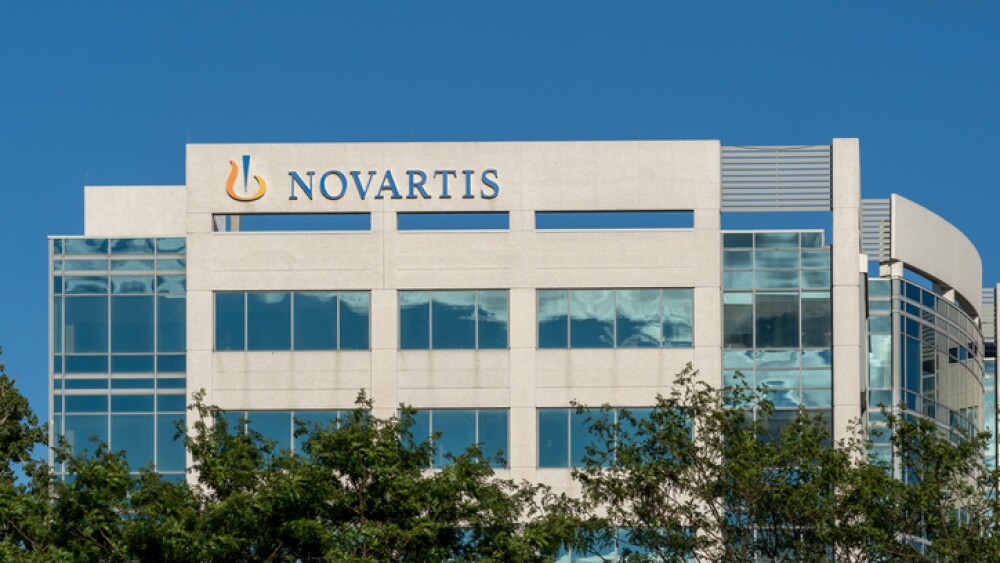This week, two studies provided big insights into brain changes and specific genetic sites and risk factors for Alzheimer’s disease. For those and more, continue reading.
LightFieldStudios/Getty
One of the big problems with Alzheimer’s disease is that we just don’t have a complete understanding of what causes it. But at least two studies released this week provide big insights into brain changes, specific genetic sites and risk factors for the disease. For those and more, continue reading.
International Consortium Identifies 75 Genetic Risk Factors for Alzheimer’s Disease
A research group in Europe, the United States and Australia identified 75 genomic regions associated with Alzheimer’s disease, with 42 of them new. The project was coordinated by Inserm Research Director Jean-Charles Lambert, with participation from the Institut Pasteur de Lille, Lille University Hospital and Universite de Lille. They analyzed the complete genomes of hundreds of thousands of people, healthy or sick, with the intention of identifying genetic risk factors associated with specific aspects of Alzheimer’s. The research is published in the journal Nature Genetics.
In a statement, Lambert said, “Following this major discovery, we characterized these regions in order to give them meaning in relation to our clinical and biological knowledge, and thereby gain a better understanding of the cellular mechanisms and pathological processes at play.”
The study involved the genomes of 111,326 clinically diagnosed/”proxy” Alzheimer’s cases and 677,663 controls. Pathway enrichment analysis confirmed the involvement of amyloid/tau pathways as well as the involvement of microglia. Of the new loci, 31 genes suggested new genetically associated processes, including the tumor necrosis factor alpha pathway through the linear ubiquitin chain assembly complex. The research team then used what they learned to develop a genetic risk score to better evaluate which patients with cognitive impairment will go on to develop Alzheimer’s disease within three years. They don’t think it will be used for clinical practice yet but could be useful in developing clinical trials to categorize participants by risk.
15 Genetic Hotspots that Accelerate or Slow Brain Aging
A Research group out of the University of Southern California identified 15 hotspots in the genome that either accelerate or slow brain aging. The results came out of the ENIGMA Consortium, using its Artificial Intelligence for Alzheimer’s Disease (AI4AD) initiative. These hotspots, or genomic loci, were identified using MRI brain scans that provided a measurement of how fast an individual’s brain was gaining or losing tissue in the regions that oversee memory, emotion and analytical thinking. After collecting these MRIs twice in 15,000 people of all ages, they then screened a million genomic markers to identify 15 genomic loci that were accelerating brain tissue changes. Some were well-known Alzheimer’s risk genes, such as APOE, while others were new. Some affect the growth rates of brain substructures in childhood, while others affect the speed of brain tissue loss in older adulthood. These may offer new approaches for Alzheimer’s therapeutics and other brain diseases.
Mechanism ID’ed for Prostate Cancer Metastasis
Investigators with the Medical University of Vienna identified specific protein changes that drive metastasis in some prostate cancers. Approximately 20% of prostate cancers are caused by incurable metastatic prostate cancer. They analyzed the role of the protein KMT2C in prostate cancer. The gene acts as a cellular regulator, but if it loses this ability due to cancer-related mutations, it encourages the proliferation of the cancer gene MYC, which drives cancer cell division. KMT2C mutations can be measured with a blood test, which may be used for the early diagnosis of aggressive cancer progression. They believe that MYC inhibitors may also be a new approach to preventing metastatic prostate cancer and other types of metastatic cancers.
Neuron Degeneration Makes Alzheimer’s Patients Sleepy
Lethargy and drowsiness are common symptoms in Alzheimer’s patients, and the general assumption has been it’s related to lack of sleep. But new research out of the University of California, San Francisco found that degeneration of a type of neuron that keeps people awake is the cause of this sleepiness. They further confirmed that the tau protein, one of two proteins that accumulate abnormally in the brains of Alzheimer’s patients (the other being amyloid), causes that neurodegeneration. The research was conducted on patients at UCSF’s Memory and Aging Center who volunteered to have a sleep monitored with EEG and then donated their brains after their deaths. Just the opposite is found to happen in patients with other neurodegenerative diseases, for example, progressive supranuclear palsy (PSP). Those patients have damage to the neurons that make them feel tired; as a result, they can’t sleep and become sleep deprived.
HIV Drug Stabilizes Metastatic Colorectal Cancer
Investigators with Massachusetts General Hospital conducted clinical research that demonstrated that lamivudine, an HIV drug, stopped progression in 25% of patients with fourth-line metastatic colorectal cancer. The clinical trial evaluated 32 patients with advanced metastatic colon cancer whose disease progressed after four lines of cancer treatments. In the patients receiving the standard HIV-approved dose of lamivudine, they saw signs of disease stability, and after adjusting the dose up four-fold, the drug at that dose was highly tolerated. Of the 32 patients, 9, or 28% had disease stability or mixed response. The next approach is to see how HAART, or highly active antiretroviral therapy – a standard three-drug HIV regimen – can work against colorectal cancer. Although all the details haven’t been worked out, they noted that 50% of these tumors’ DNA was made up of repetitive elements. They kick out very high levels of RNA, which replicate in a viral-like life cycle. The antiviral appears to interfere with that life cycle.
COVID-19 Infection Immunity Largely the Same as by Vaccination
Researchers at St. Jude Children’s Research Hospital studied how vaccination against COVID-19 compared to infection with the disease. The data confirmed that immunity to infection is about the same as that from the vaccines because both create similar T-cell responses. However, in people with natural COVID-19 infection, vaccination expanded T-cell memory and immune activation.
“If you’ve been infected, the vaccines still activate and expand your immune response in ways that can be protective,” said co-corresponding author Paul Thomas, PhD., St. Jude Department of Immunology. “If you’ve been vaccinated and then get infected, the vaccine still helps protect you. Very importantly, it doesn’t limit your ability to develop new immune responses to the strains that you’re infected with. The type of immunity on the T-cell side that the vaccine gives you look very similar to, and in some ways superior to, the response that you get from infection.”





